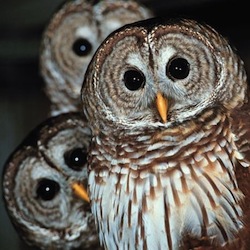 The second book in my 2012 La Nina Reading List was “Roosters of The Apocalypse,” by Rael Jean Isaac. This book could be a dictionary definition of “opposite” as compared to Climate Wars. Where Climate Wars is on the far right side of hysteria of the evils of climate change, Roosters of The Apocalypse is on the far left side of hysteria that it is a major, orchestrated hoax upon the world that is costing us billions upon billions of dollars.
The second book in my 2012 La Nina Reading List was “Roosters of The Apocalypse,” by Rael Jean Isaac. This book could be a dictionary definition of “opposite” as compared to Climate Wars. Where Climate Wars is on the far right side of hysteria of the evils of climate change, Roosters of The Apocalypse is on the far left side of hysteria that it is a major, orchestrated hoax upon the world that is costing us billions upon billions of dollars.
So what is a rooster anyway? Isaac quotes Richard Landes who describes “those who initiate and build support for these movements as roosters (aka Al Gore) for they crow an exciting new message, and their opponents as owls, gloomsters counseling caution and skepticism (Real Issac).” Issac weaves the message of the Xhosa throughout the book, a parable about an orphan girl’s vision of truth. I can’t tell you her truth because I was unable to follow the thread. Rather than explain it in one section, she drops little nuggets of the story throughout the book and not in a clear, concise way. I could have looked up the story on Google, but quite frankly, I’m far to lazy to go to the trouble.
Anyway, the key to building momentum is getting “elites” to join the cause. Al Gore, or U.S. Senator Majority Leader Harry Reid would be considered rooster elites. Once that happens, ordinary people will join in. Isaac tells the story of how the prophecy of global climate change caught fire and spread around the world in breathtaking speed. While doing this, she deconstructs all the “deceptive techniques” and fakery” used by organizations such as the Intergovernmental Panel on Climate Change (IPCC). I won’t rehash the scandal involved in their report but the bottom line was accusers claim they fudged the numbers to support climate change.
It is no doubt that those on the “right side of green” will make millions on global climate change.
Issac writes, “Giant corporations see dollar signs in government-subsidized solar and wind power and in trading carbon credits under cap-and-trade schemes. They became deep-pocket lobbyists for the apocalypse.”
 Thus began the metamorphosis of a thought to a full-blown climate change catastrophe. “The process by which “global warming” morphed into “climate change” is a good example of apocalyptic jazz. (Apocalypses adapt to changed circumstances.) Starting in 2002, the world unexpectedly stopped warming even as carbon dioxide levels continued their steady rise. To the great chagrin of the roosters, none of the twenty multimillion-dollar supercomputers on which they based their predictions had foreseen this. Substituting “climate change” for “global warming” solved the problem.”
Thus began the metamorphosis of a thought to a full-blown climate change catastrophe. “The process by which “global warming” morphed into “climate change” is a good example of apocalyptic jazz. (Apocalypses adapt to changed circumstances.) Starting in 2002, the world unexpectedly stopped warming even as carbon dioxide levels continued their steady rise. To the great chagrin of the roosters, none of the twenty multimillion-dollar supercomputers on which they based their predictions had foreseen this. Substituting “climate change” for “global warming” solved the problem.”
With the elite roosters leading the way, the movement was hatched, became a toddler and has now entered its teen years. But this movement needs to stop, says Issac, and one way to achieve this will be to take on the environmental groups. In her conclusion she writes, “Because the environmentalists have been able to play their game unchallenged for so long, making the case against them now is difficult. But if we don’t succeed, when the inevitable blackouts and energy rationing and sky-high bills come, it is the energy and utility companies that will be blamed for shortages and overcharging. The environmental groups, which are the real villains, will be leading the virtuous charge…and getting way with it.”
I guess the big question to ask yourself is who is getting away with what? You’ll have to pick a side – either become a rooster or an owl – to answer that question. Reading this book will get both sides fired up, it is short and accusatory. But alas, it ends with a playbook of how to squash the fear around global climate change so no matter what side you’re on, you’ll know how to fight.

